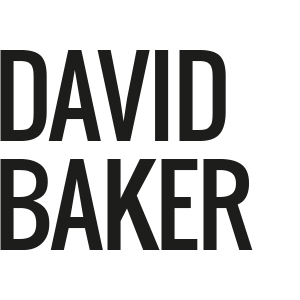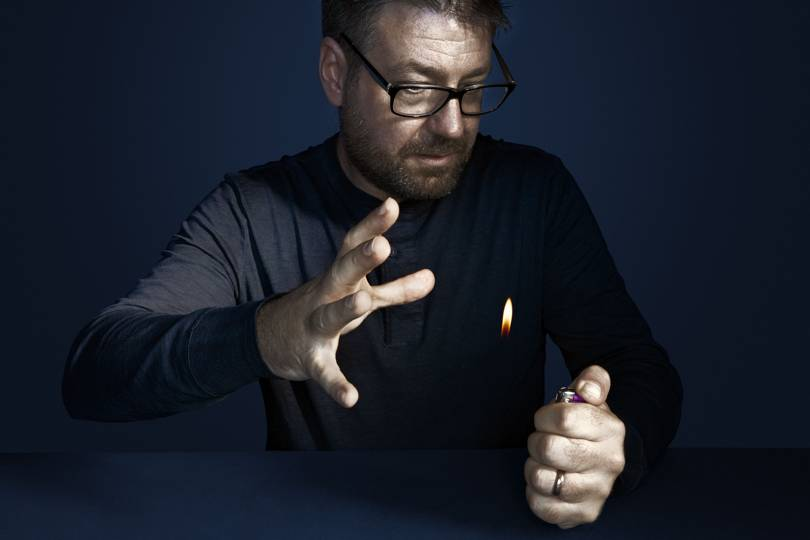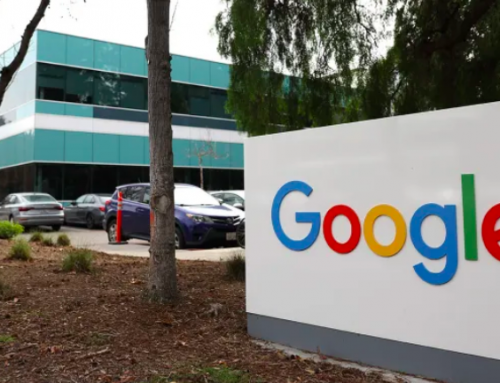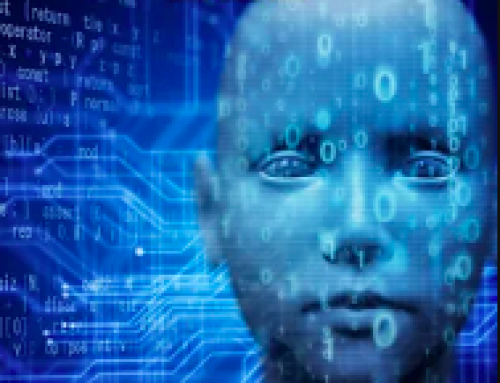Conjurors and neuroscientists are helping us understand the human brain
Wired, March 2019
In a brightly coloured shipping container in east London, Rubens Filho is asking me to pick a card. “Any card,” he says, fanning the pack out face down. “And don’t worry, you can show me. That’s not the point of this trick.”
I pull out the seven of spades and show it to him. He gets me to sign my name on it. Then he slides it back into the pack, puts the cards back in their box and puts the box on the table in front of us. “Now,” he says with a grin, “the magic begins.” Filho is 51, tall, handsome and infectiously enthusiastic about the power of illusions. Born in Brazil, he’s been a keen magician since adolescence. He came to Britain in 2012 to work in advertising before, in 2015, setting up Abracademy, to bring magic – and, in particular, the skills needed to perform it – to the rest of us. “I think magic has a such a positive twist,” he says. “It brings this soft approach that’s hard to explain, this role of creating something beautiful.”
But he is also fascinated by the relationship between magic and neuroscience and psychology, and set up Academy Labs to explore this connection. “Magic has lived in the ‘glitches’ of the brain for a long time,” he says: “How you see things, how you form beliefs, how you experience wonder. And it has the capacity to create wonder by creating something that people can’t explain. You just say ‘Wow’, and then comes: ‘How do you do that?’ So we explore what happens when we experience something like that. We’re very interested in going deep, deep down into the brain.”
On this summer afternoon at Abracademy’s base in Hackney’s Container Park, Filho has been trying to create something beautiful, and new. We stand on either side of a small felt-topped table – the cards in their box between us – and Filho is a little nervous.
“Now, there are three ways we could get your card out of the box,” he says. “We could use telekinesis and draw it out… but we’re not going to do that. We could make it rise up to the top of the pack… but we’re not going to do that. Or…” He looks me in the eye, that grin turning into puzzlement. “Do you hear that? Do you hear anything?”
To be honest, at first I don’t. I’m confused for a second. And then, a faint buzzing, as if Container Park has a wasp problem. It’s getting louder and it’s a little alarming. “Look behind you,” says Filho, with mock amazement. “What’s that?”
Flying gently towards me from the far end of the room is a drone, with my signed card hanging by a wire. The room collapses into laughter and applause, and a big sense of relief. “We really weren’t sure if it was going to work,” Filho admits.
For much of human history, science and magic were practically the same thing. In the late 19th century, psychologists were intrigued by stage magicians and seance psychics and their ability to play with the minds of their audiences. And magicians returned the favour, snapping up scientific innovations in optics and electromagnetism.
That all changed in the 20th century. “From about 1910 there was very little study of magic,” says Gustav Kuhn, 44, a reader in psychology at Goldsmiths, University of London – and a professional magician. “That was probably because of the influence of behaviourism. Magic is all about experiences; behaviourists were more interested in actions and reactions,” he says. “For me, there was always a very close link between magic and psychology. To be a good magician you really need to understand how the brain works.”
Kuhn grew up in Switzerland and moved to Britain in 1993 to work as a magician. He “fell into” academia. “I was lucky to meet some researchers who were using eye-tracking technology to study how attention can be misdirected. And soon I realised that magic provides us with a really useful tool to study some of these perceptual areas.”
We don’t see things literally happening in front of our eyes, says Kuhn, because the brain is a brilliant economiser of resources. “We have to filter out information, otherwise we would get overwhelmed. The brain selects the stuff that’s really important. So we can be looking at something, but the information doesn’t reach our conscious experience.”
Try this by looking at the wall opposite you. Unless you have been thinking about decorating, you will notice marks that you were unaware of. It’s not that photons from those marks never landed on your retina. It’s just that the brain discarded that data as unimportant. Magicians have understood this phenomenon for centuries: in many illusions, the sleight of hand is not hidden – but we don’t notice. Most magicians will tell you that they achieve this “misdirection” by getting the audience to look away when the rabbit is popped into the hat.
Kuhn suspected otherwise – and decided to use magic to prove that when magicians palm a coin or switch cards, we are looking directly at them. He set up in the University of Sussex students’ union bar with a cigarette, lighter (this was before the UK’s smoking ban) and eye-tracker, and performed a simple illusion. “I would put a cigarette in my mouth,” he says, “go to light it, and then notice it was the wrong way round.” He mimes astonishment. “So I take it out and, at the same time, move my other hand, holding the lighter, down to table level, and drop the lighter into my lap. I then move that hand up to my line of sight, snap my fingers and, hey presto, the lighter had disappeared.”
Not that great a trick, as Kuhn is the first to acknowledge. But from a perceptual point of view, the magic was just about to happen. At the same time as snapping his fingers, he simply let go of the cigarette with his other hand, so it fell into his lap. He then stared at that hand as if the cigarette had vanished. “What we found,” he says, “is that most people would not see the cigarette falling, including some looking directly at it. We had shown that what people see is not related to where they are looking.”
This has big implications. “Take driving,” he says. “We used to think that mobile phone use was distracting because people were taking their eyes off the road. But what this research tells us is that it’s not about where you’re looking, it’s about your mind being distracted. Really, we should ban everybody from holding conversations on the phone. If your mind is distracted, you simply don’t see things.”
Inattentional blindness is now a huge research area. But Kuhn is even more interested in what is perhaps a more alarming aspect of magic: how it can easily dislodge what we think are deeply held beliefs. “It’s usually assumed that beliefs are almost like traits, things that are very hard to shift,” he says. “A lot of the studies on belief are correlational, as it’s difficult to manipulate belief in an ethical way. But magic is all about pushing the boundaries of what people believe to be possible, and it provides us with a very useful tool to see whether we can actually change beliefs. And what we are finding now is that there are experiments that can.”
Almost all magicians will tell you that magic takes place not during the illusion
itself but in the time afterwards, when the brain tries to make sense of what it has seen. In the café at Goldsmiths, where Abracademy Labs has its base, I meet its head, Kuhn’s colleague Hugo Caffaratti. An Argentinian-born magician and neuroscientist, Caffaratti is, like Kuhn, confident about magic’s potential as a means of scientific research – a tool for examining the messiness of real life.
“Psychology,” Caffaratti says, “is fascinated by things such as, say, the gaps in our perception that lead us to wander around looking for our glasses when they are on our heads. But how do you take that into the lab? Well, with just a deck of cards and a little table you have millions of illusions that play on the same gaps in our perception and can be repeated in exactly the same way, again and again.”
Caffaratti was captivated by magic as a child. By 21 he was admitted to the Spanish Society of Illusionists, where he met Francisco-Amilcar Riega Bello, known to everyone as Amilkar. He showed Caffaratti that magic is “not about being fast with your hands. It’s about attacking the brain.”
The Spanish school argued that magic was entirely about exploiting what Filho calls the “glitches” of the brain, the vulnerabilities of the way we perceive the world and ourselves, and which we, for the most part, are unaware of. We perceive only a fraction of what is around us. (Kuhn reckons it is as little as ten per cent.) Our memories and even our core beliefs are ridiculously malleable. And our choices – as any magician asking us to “pick a card, any card” knows – may be much less free than we think. Perception, memory, free will: these are weapons in the hands of a skilled magician.
“Magic breaks the natural inferences that we make of the world,” Caffaratti says. “When you see a magic trick, your brain searches your memories to see if you have seen something similar. And, if it can’t find it, it kind of says, ‘What is this?’ A ball that can disappear, a table that levitates, these are not the usual categories that help us perceive the world. So there is a delay before we perceive them.”
As a PhD student at the University of Leicester, Caffaratti set out to prove the physical existence of that delay, while at the same time demonstrating magic’s potential as a neuroscientific tool. He videoed himself performing a routine called Chop Cup, involving a cup and a ball, which was made famous by the British magician Paul Daniels.
“It’s an amazing routine,” he says. “The ball appears and disappears under the cup in incredible conditions. You put the ball under the cup, lift up the cup, and it’s not there. You put the ball under the cup again and it’s in your pocket. Now it’s underneath the cup. Now it has disappeared again. It’s a great illusion – and the important thing is you can repeat it again and again.”
Caffaratti connected his test subjects to an electroencephalography monitor, which measures electrical activity in the brain, and showed them the video. He was looking for traces – known as the event-related potentials (ERPs) – of the perceptual processes that are at play when we perceive magic. ERPs are changes in voltage that indicate that the brain has responded to a specific stimulus (in this case, the appearance or disappearance of the ball). What Caffaratti found was that the unexpected outcome of the magic trick elicited strong ERPs that were significantly delayed compared with those triggered by an event that wasn’t magical.
When subjects were shown a series of “normal” events – the ball placed under the cup, for example, and still there when the cup was lifted – their brains showed a particular ERP, known as P300, approximately 300 milliseconds after the event.
“But when the magic trick happened,” he says, “a P300 was elicited about 50ms later. We were seeing that, when it’s magic, it takes more time.” What the results demonstrated was that an “impossible” event, such as a magic trick, takes a greater amount of time to be processed, compared with something the brain is familiar with.
The fact that what was physically the same object, in this case, a magician’s ball, elicited different responses, depending on whether the object appeared “magically” or not, helped to confirm a long-held idea in psychology: that
our perception – the way in which we make sense of the world – relies not only on the raw data coming in to the brain from our senses, but also on our pre-existing knowledge of the world, which is stored in our memory. Caffaratti had shown what happens when searching that second stream draws a blank. He had lifted the lid on the neuroscience of wonder.
I am sitting in the back row of a lecture theatre in Kuhn’s department at Goldsmiths. It’s the summer holidays, and the faculty is holding an open day for prospective students. A hundred 17- and 18-year-olds trickle in, neatly dressed in school uniforms. They’re here to hear about life as a Goldsmiths undergraduate. But first they are going to be the subjects of a psychology experiment.
Kuhn stands up and explains what is going to happen. He says the department is often approached by people claiming to be psychics. Usually it tells them to go away; this is a place of science, not superstition. But someone has come to their attention recently who seems worth a second look, and we’re going to see him in action. But first Kuhn would like us to complete a questionnaire. He passes a four-page handout down the aisles and asks us to complete page one – rating on a scale of zero to seven how much we believe in “supernatural” phenomena such as reincarnation, poltergeists, communicating with the dead and so on. Once we have filled it in, he asks us to turn to page two.
Here we are presented with a short paragraph about what we are about to see. Kuhn asks us to paraphrase this information in the space underneath, to ensure that we have understood it properly. Half of the audience, he tells me later, is informed that the man we are about to see claims to have psychic powers. The other half is told that he is a skilled magician and that everything we’re going to witness is an illusion. Then the show begins.
The lights dim and a young man takes us through a wonderfully entertaining psychic routine. He correctly guesses, to oohs and aahs from the crowd, how hidden dice thrown by members of the audience have landed. He tells random people in the theatre surprisingly intimate details about their lives. As a finale, he brings someone up on stage and relays a message from her deceased grandfather. She reels in astonishment as the audience gasp and applaud. The show is over, our psychic takes a bow, and pretty much everyone is wide-eyed.
But not with disbelief. Now we have to fill in the same questionnaire – reincarnation, poltergeists, communicating with the dead and so on – as before. And the results are surprising. Again and again, when Kuhn stages this experiment, it does not matter what the audience members have been told in advance – afterwards, people tend to believe more strongly in the supernatural than they did before seeing the show. And remember, these are prospective psychology students.
“We have shown,” Kuhn says, “that you can change someone’s belief through a really strong demonstration of something that people previously thought impossible or very unlikely. You can move them down the continuum quite a long way.”
The psychic is introduced as Matt Tompkins, a semi-professional magician and researcher in experimental psychology at Oxford; the dice are revealed to be rigged; the questions are general enough for Matt to work out something from his target’s answers (a mentalist trick called “cold reading”); and the woman who was stunned to hear from her grandfather is revealed as a stooge.
Kuhn is troubled by results like this. “Magic is all about giving people false explanations for what you have done physically,” he says. “Mentalism does this a lot, pretending to read people’s minds, when obviously that’s impossible. But our research shows that these types of performances really do change people’s beliefs, and that puts me in a difficult position. On the one hand I work as a scientist who is trying to inform people and debunk myths about the brain; yet I am using magic to misinform them. So that has led me to a point where I feel there are, ethically, magic tricks that I would like to do – but cannot.”
Despite this research, not everyone agrees that magic has shown it has a big role to play in advancing our knowledge of psychology and neuroscience. “I think a lot of magic tricks are very good illustrations of stuff psychologists already know,” says Richard Wiseman, professor of the public understanding of psychology at the University of Hertfordshire, and himself a magician.
Kuhn is unperturbed. “When I started this work in 2004, 2005, a lot of fellow scientists laughed a little bit,” he says. “They said it was kind of quaint and cool, but can it actually tell us anything of interest? And I think now we are showing they are wrong.” He points to the large number of papers he and his colleagues have published that use magic illusions to throw light on the workings of the mind – particularly on how easy it is to manipulate decision-making and deeply held opinions. In a world of fake news, he says, magic’s strong connection with deception will help us understand more about the mind’s limitations when it comes to working out what is true and what is not.
For Kuhn, the scientific study of magic today is in a similar place to the study of consciousness in the 1980s. “Any academic going into psychology then,” he says, “and saying they were studying consciousness would have been told that can’t be a serious science because you can’t measure it. Now it’s one of the coolest topics in science.” And he has shown that all of us – scientists and lay people alike – need to be a little less confident of what we know to be “true”.
As we file out of the lecture theatre into the late-afternoon sun, two prospective psychology undergraduates behind me are still talking about the show.
“I know what he said about the dice and stuff,” said one, a girl who was about 17, “but I still think there was something weird about that guy. He could read minds.” “Definitely,” said her friend, a male student. “That definitely exists.”






